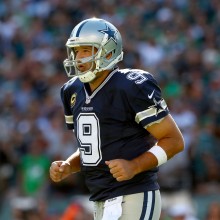As a Buffalo Sabres fan, all we have to hope for is more draft picks and that said draft picks can step him, develop properly and lead the franchise to new heights.
This strategy isn’t exactly fool proof and those who think the best way to build a contender is through trades and free agency will quickly point to the Edmonton Oilers and their struggles despite having three straight first overall picks and a plethora of young, exciting talent.
So I wondered: what have past Stanley Cup winners done? How did they build their rosters to become winners? I took a look at each champion since 2004 and determined who on their roster that made an impact (not guys who played a handful of games or had a handful of points) was drafted and who was acquired.
As a reminder, your past 10 Stanley Cup Champions are the Los Angeles Kings (2014, 2012), Chicago Blackhawks (2013, 2010), Boston Bruins (2011), Pittsburgh Penguins (2009), Detroit Red Wings (2008), Anaheim Ducks (2007), Carolina Hurricanes (2006) and Tampa Bay Lightning (2004).
Also something to consider: the league and the game were undergoing changes thanks to the locked out 2004/05 season. Not only did the league go away for a whole year, but they adjusted the rules to make the game less restrictive to the flow of the game. Scoring went way up in 2005/06, though it did steadily come back down.
The results were pretty interesting, to say the least.
Going back to the championship years of the Ducks, Hurricanes and Lighting, it seems that very few of their impact players were drafted.
A breakdown:
The Ducks had selected Corey Perry, Ryan Getzlaf and Ilya Bryzgalov, but had traded for or signed Francois Beauchemin, Scott Niedermayer, Chris Pronger, J.S. Giguere, Chris Kunitz, Todd Marchant, Andy McDonald, Dustin Penner and Teemu Selanne.
The Hurricanes found Andre Ladd, Eric Staal, Erik Cole and Cam Ward in the draft. They managed to acquire Rod Brind’Amour, Matt Cullen, Bret Hedican, Cory Stillman, Ray Whitney, Justin Williams, Doug Weight and Frantisek Kaberle through other means and got major contributions from the majority of them.
The Lightning, meanwhile, found stars in Vincent Lecavalier, Pavel Kubina and Brad Richards, but struck it rich through trade and free agency by bringing in Dave Andreychuk, Martin St. Louis, Dan Boyle, Ruslan Fedotenko, Nikolai Khabibulin, John Grahame, Frederik Modin, Cory Sarich and Cory Stillman.
Three teams in a row who managed to find huge pieces in the draft, but built their roster by making shrewd trades and smart signings. They built their cores with veterans who had proven themselves and used the draft to supplement that with big building blocks.
It’s when you get to 20008 and beyond that things start to really shift in terms of philosophy.
The Red Wings in 2008 had a vast majority of their roster come via the draft: Henrik Zetterberg, Pavel Datsyuk, Nicklas Lidstrom, Justin Abdelkader, Kris Draper, Valteri Filppula, Johan Franzen, Tomas Holmstrom, Niklas Kronwall, Kurt Maltby, Mikael Samuelsson, Tomas Kopecy and Jiri Hudler all played key roles for the Wings during their last Stanley Cup season. They had help from outside sources like Brian Rafalski, Dominik Hasek, Chris Chelios and Dan Cleary, but the bulk of their roster had come from within.
The same goes with the Pittsburgh Penguins in 2009, having drafted Sidney Crosby, Evgeni Malkin, Marc-Andre Fleury, Jordan Staal, Ryan Whitney, Max Talbot, Alex Goligoski, Tyler Kennedy and Kris Letang while adding solid complimentary players in Matt Cooke, Pascal Dupuis, Ruslan Fedotenko, Chris Kunitz and Petr Sykora through other means.
The Boston Bruins in 2011 might have found the best mix. They drafted key players in Patrice Bergeron, Milan Lucic, David Krejci, Brad Marchand and Tyler Seguin, but they also made some incredibly smart moves to bring in Zdeno Chara, Nathan Horton, Tuukka Rask, Tim Thomas, Mark Recchi, Michael Ryder and Blake Wheeler.
Chicago is the most definitive case of “build through the draft” there currently is. For their 2010 and 2013 championships, they drafted Duncan Keith, Brent Seabrook, Corey Crawford, Patrick Kane, Jonathan Toews, Dave Bolland, Bryan Bickell, Niklas Hjalmarsson, Marcus Kruger, Nick Leddy, Brandon Saad, Ben Smith, Dustin Byfuglien, Cam Barker and Troy Brouwer (only the latter three weren’t on the 2013 championship team). That’s a damn near the whole roster. They supplemented that with guys like Marian Hossa, Patrick Sharp, Brian Campbell, Andrew Ladd, Antti Niemi and Kris Versteeg over those two seasons, adding even more depth to an already ridiculously deep team.
The Kings are on the same path. They are the defending champions, having won their second title in three years. They drafted a good chunk of their core – Dustin Brown, Anze Kopitar, Drew Doughty, Jonathan Quick, Slava Voynov, Trevor Lewis, Alec Martinez, Dwight King, Tyler Toffoli, Colin Fraser – and added some high quality pieces to supplement that group – Marian Gaborik, Jeff Carter, Mike Richards, Justin Williams, Jarrett Stoll, Matt Green. Like the Bruins, they drafted smartly but did make some incredibly smart moves via trade and free agency.
As the Kings and Blackhawks have shown, if you do it correctly, you can not only build your team via the draft but you can build a contender. Obviously, it’s not as easy as just hitting your first round picks; there have to be finds later on in the draft that can either make it in the lineup or be moved for pieces that can help the team.
So if you can build with high-end picks and mid-late round steals, do it. Just make sure you do a better job of drafting than the Oilers have.
Follow me on Twitter: @TwoPadStackRW




















